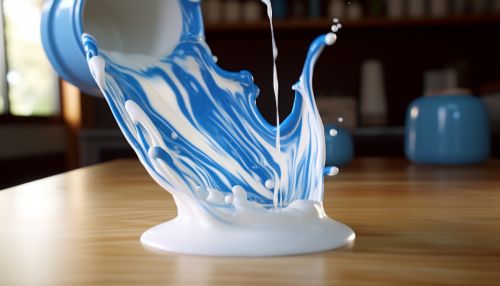Shear Thinning
Introduction
Shear thinning is a non-Newtonian fluid behavior characterized by the reduction of viscosity with increasing shear rate. It is a common phenomenon in complex fluids such as polymers, paints, ketchup, and blood. This property is crucial in various industries, including food, cosmetics, and petroleum, where it influences product performance and processing characteristics.


Understanding Shear Thinning
Shear thinning is a type of rheological behavior, the study of the flow of matter. It is primarily observed in non-Newtonian fluids, which do not follow Newton's law of viscosity. This law states that the shear stress between layers is proportional to the velocity gradient in the direction perpendicular to the layers. However, in non-Newtonian fluids, the viscosity changes with the shear rate, which is the rate at which a progressive shearing deformation is applied.
In shear thinning, the viscosity, or internal friction, decreases as the shear rate increases. This behavior is also known as pseudoplasticity. It is the opposite of shear thickening (or dilatancy), where viscosity increases with the shear rate.
Mechanism of Shear Thinning
The mechanism of shear thinning in non-Newtonian fluids can be explained by the alignment of particles or macromolecules in the direction of flow. Under low shear conditions, these particles or macromolecules are randomly oriented, resulting in a high viscosity. As the shear rate increases, these particles or macromolecules align in the direction of flow, reducing the internal resistance and thus the viscosity.
For example, in a polymer solution, the long polymer chains can become entangled, creating a network structure that gives the solution a high viscosity. When a shear force is applied, these chains disentangle and align with the flow, reducing the viscosity.
Measurement of Shear Thinning
Shear thinning behavior can be measured using a rheometer, an instrument that applies a controlled shear stress or shear rate to a sample and measures its response, typically the viscosity. The result is usually presented as a flow curve, a plot of viscosity versus shear rate.
In a flow curve of a shear thinning fluid, the viscosity decreases with increasing shear rate. The degree of shear thinning can be quantified by the power-law index or the shear thinning index, which is the slope of the flow curve on a log-log plot.
Applications of Shear Thinning
Shear thinning behavior has important implications in various industries. In the food industry, shear thinning is desirable in products such as sauces and dressings, which need to be thick at rest but flow easily when poured or spread. In the cosmetics industry, shear thinning allows products like lotions and creams to be easily spread but remain in place after application.
In the petroleum industry, shear thinning is important in the flow of drilling fluids, or muds. These fluids need to be thick at rest to suspend drill cuttings, but thin during pumping to reduce energy requirements.
In the biomedical field, blood is a shear thinning fluid, which facilitates its flow in the circulatory system. Understanding the shear thinning behavior of blood can help in the design of medical devices and in the diagnosis and treatment of blood-related diseases.
